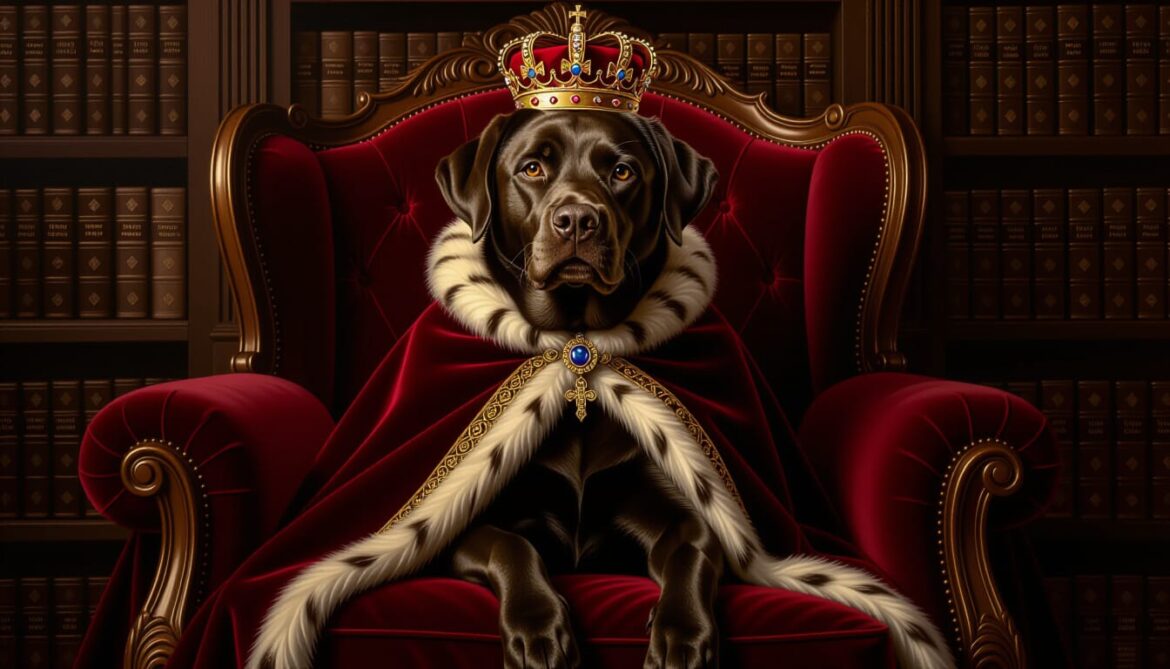The second portrait hung opposite Sir Reginald’s, the pair forming a strange symmetry at the end of the corridor. While the Basset Hound sat in solemn regality, this Labrador radiated warmth — or at least, it had once.
Painted in the same Renaissance oil style, the brown tones of the dog’s coat glowed faintly even in the corridor’s gloom. He rested on a velvet cushion, though his posture was less formal than Sir Reginald’s — head tilted slightly, eyes bright, as if listening for a command that would never come.
The plaque beneath read simply:
“Captain.”
House records said the painting had been commissioned by Lady Eleanor Whittemore after her husband’s death at sea. Captain had been his hunting companion, but rumor claimed the Labrador waited at the manor’s gates for three days after the shipwreck — until the dog was found lying in the snow, frost clinging to his fur.
Lady Eleanor refused to bury him. “He’s still waiting,” she had said. “He just hasn’t been called yet.”
It was said she locked herself in the west drawing room with the painter, demanding that every stroke capture Captain’s loyalty, his hope. The final portrait glowed with life — so much so that the household servants whispered she’d traded something of herself to achieve it.
When she died, the staff found her seated before the painting, one hand resting on the gilded frame. The room smelled faintly of salt and rain, though the windows had been shut for months.
Since then, visitors swore that on stormy nights, when thunder rolled across the valley, the scent returned — wet fur, sea air, faint traces of lavender oil. And sometimes, the faint scratch of claws echoed down the hall, followed by the sound of waves where there could be none.
Years later, when the estate was converted into a private museum, a restorer discovered a faint shimmer beneath the paint. Under infrared, another figure appeared — a man in naval attire, standing behind the dog, his hand reaching down toward its head.
But the hand stopped short. A single inch of empty canvas separated them.
The curator who uncovered it refused to retouch the piece. “The painting isn’t unfinished,” she said quietly. “It’s waiting. Just like he was.”
Across the hall, Sir Reginald’s portrait seemed to darken by a shade that night, as if the two paintings were speaking again — one mourning, the other remembering.

